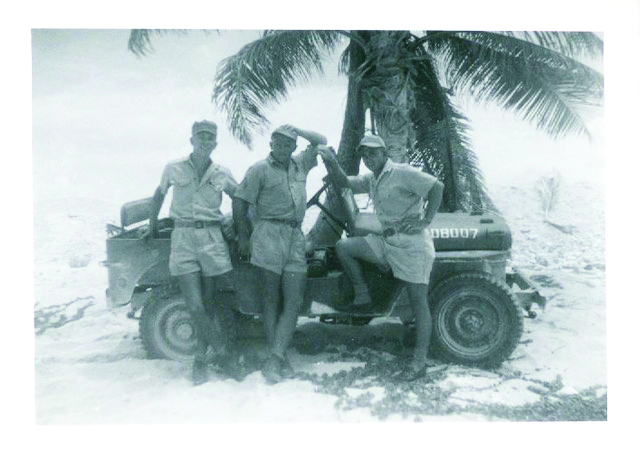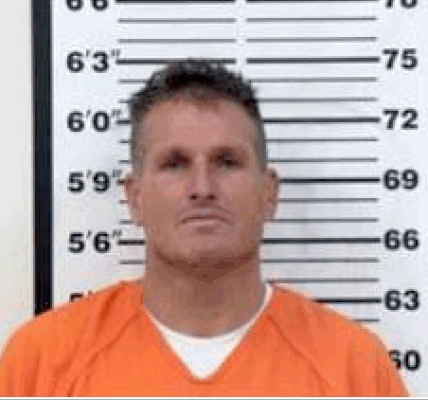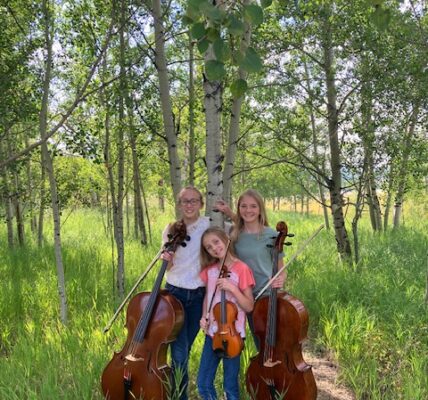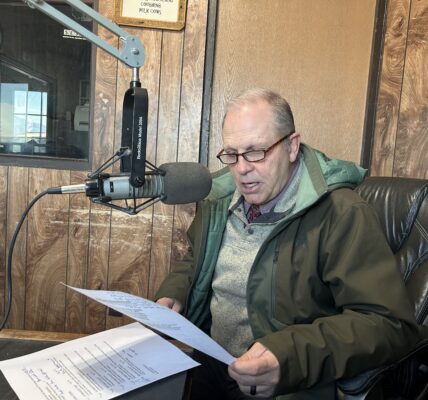
By Seth Taylor
Buffalo Bulletin
Via -Wyoming News Exchange
BUFFALO — The day after more than 350 Japanese aircraft attacked U.S. forces at Pearl Harbor, Johnson County High School students assembled in the school gymnasium to listen to President Franklin Roosevelt address the nation.
The events of Dec. 7, 1941, were still coming into focus at the time, but the number of wounded would eventually tally 1,178 and the number of dead would rise to 2,403, according to The National WWII Museum. Among them was Elmer Christensen, a 24-year-old Johnson County High School graduate who served aboard the USS Arizona and whose body remains at the bottom of Pearl Harbor.
By the end of World War II, at least 20 Johnson County men would join Christensen among the list of dead and missing, and more than 1,000 Wyoming men would die due to the war, according to information from the Buffalo Bulletin and the Wyoming State Historical Society.
On Dec. 8, Fred Gray sat in the high school gymnasium among his peers, listening to Roosevelt with rapt attention.
“The thought that some of us listening would be dead in the near future because of it would have been ludicrous,” Gray wrote in an unpublished autobiography.
“Roosevelt’s voice was calm and confident, as it was programmed to be, and it would be left to future generations to learn some of the things he had neglected to tell us.”
At 97, Gray, a lifelong Buffalo resident who can still be seen ambling around town, stopping by the post office or the library, is one of the last living veterans of WWII. Recently, 80 years after the attack on Pearl Harbor, Gray donated documents, photographs from his time in the military and a copy of his autobiography to the Johnson County Library’s archives. His stories paint a picture of an unfamiliar war fought in unfamiliar territory — and a group of young men and women unaware of the sacrifices they were about to make.
In the fall of 1943, amid the United States’ campaign in the Pacific, Gray was drafted into the armed services. He reported, reluctantly, to Fort Logan outside of Denver. He was 19.
“If there had been any way to sneak back home, I’d have done it,” Gray wrote in his autobiography.
Over the next nine months of training, Gray traveled to 11 different bases, in Wyoming, Colorado, California, Texas, Washington and Hawaii.
Each of these places was foreign to Gray, as were the customs of the U.S. military. The men wore neckties, but Gray didn’t know how to tie a necktie. He had to ask a friend to tie it for him. They wore belts with brass buckles, but a superior officer reprimanded Gray for wearing his buckle upside down — the way a woman would wear it.
“There was nothing I could have done that would have been more obvious,” Gray wrote. “My reputation as a Wyoming redneck was firmly established.”
There were advantages to being from Wyoming, though. During firearms training, Gray was a natural, while others struggled. Some were so bad that their bodies turned black from the bruising recoil of the gun, and they did everything they could to avoid the guns, Gray wrote.
“It was possible to get an idea of what part of the country they came from simply by observing the way they handled firearms,” he wrote.
Gray joined the U.S. Army Air Force and trained as a gunner, but his motion sickness forced him out. Fortunately, he had a unique skill. At Johnson County High School, Fae Baird had taught Gray how to type. Now, he was one of the only men who could. That meant that he would be stationed in the South Pacific, typing up official communications rather than slogging through the trenches in Europe.
On Sep. 8, 1944, his mother’s birthday, Gray shipped out to Hawaii to await transport to the Pacific. While he was there, Gray slept in barracks still riddled with holes from Japanese machine guns. A few weeks later, Gray flew to Canton Island, 1,909 miles southwest of Hawaii.
Canton Island (more accurately described as an atoll) served as a refueling and resupplying station on the way to islands occupied by Japanese forces. Thousands of soldiers departed Canton and fought their way, island by island, closer to Japan, according to a 1955 National Geographic article.
The atoll, composed of coral and the remnants of an ancient volcano, was really a stretch of land — almost 30 miles around — bordering a large lagoon. The National Geographic article described the atoll as looking like a “hollow pork chop.”
When Gray arrived, he wore long pants, a long shirt and a jacket — an outfit that did not suit the climate of an island less than 200 miles from the equator.
“When they opened those cargo doors, that heat flooded in,” Gray said in an oral history interview conducted with librarian Nancy Tabb.
Gray had never seen anyone wearing shorts, but everyone unloading the plane and greeting the new arrivals was wearing them, and by the next day, Gray was wearing them too.
The island was barren, with few animals and even fewer plants, Gray wrote. There was just one tree on the island, a palm tree, and the men built a platform amid the fronds. From there, they swept the horizon with their binoculars in search of enemy submarines.
But the island was never in much danger.
“I never even got close to the fighting part,” Gray wrote. “The only thing anybody on Canton Island had to contend with was boredom.”
Fighting boredom, the men generally turned toward the lagoon, which — with the assistance of a plank rigged to serve as a diving board — they used for swimming.
When the soldiers were looking for a good meal, the U.S. Navy positioned a destroyer at the mouth of the lagoon and dropped depth charges, killing thousands of fish that then washed onto the shore.
“There was every different kind, color, shape and size of fish imaginable. We would walk the shore and pick out anything we figured was edible,” Gray wrote.
The military also brought famed entertainers to the island — Bob Hope, Johnny Colonna, Olivia de Havilland, Jack Benny, Carole Landis and Chili Williams, among others — to keep morale high. Photos of the performers — entertaining the men, galavanting across the island, posing in front of aircraft — were taken by Leslie Edwards, the base photographer and a good friend of Gray’s. Edwards gave copies of his photos to Gray, and those images are some of the last memories of Canton Island.
If famous singers weren’t in attendance, the men resorted to reading the lyrics of new songs (sent by one of the soldier’s girlfriends). Sitting together, reading the lyrics over and over, they imagined the melodies that might go along with the words.
“It was months later and after the war had ended before I got close to a radio and heard the words and lyrics together,” Gray wrote. “We hadn’t even been on the same planet.”
On late nights, when Gray was still on shift but nothing was happening, he’d wander over to the Officer’s Club, where his friend, Howard Davis, bar tended. Sitting at the back door, they planned for the future, and Gray tried to convince Davis to come to Wyoming and try sheep herding. It never worked, though.
In August of 1945, when the United States dropped two atomic bombs on Japan and killed more than 90,000 people, the event barely registered with the soldiers assembled on Canton Island.
“None of us had any idea what an atom bomb was and I just figured that somebody had come up with a bigger stick of dynamite,” Gray wrote.
But days later, when Japan surrendered, the men took notice.
In Buffalo, the Buffalo Bulletin’s front page read “Complete Victory!” The victory came three years, eight months and one week after the attack on Pearl Harbor, the article noted. Inside the paper were the names of 20 Johnson County men who had died in the war.
In the following months, each returning soldier was named and welcomed back by the American Legion and the Bulletin when they arrived home. It wouldn’t be until March of 1946 when Gray arrived back in Wyoming, though.
Gray took the train to Rawlins. From there, he hitchhiked his way toward Buffalo. As the Bighorn Mountains came into view and the miles to home ticked down, Gray asked the driver to stop. He got out of the car, and he walked to the top of a hill overlooking the city, and he took it in.
“The place looked much smaller,” he wrote.






